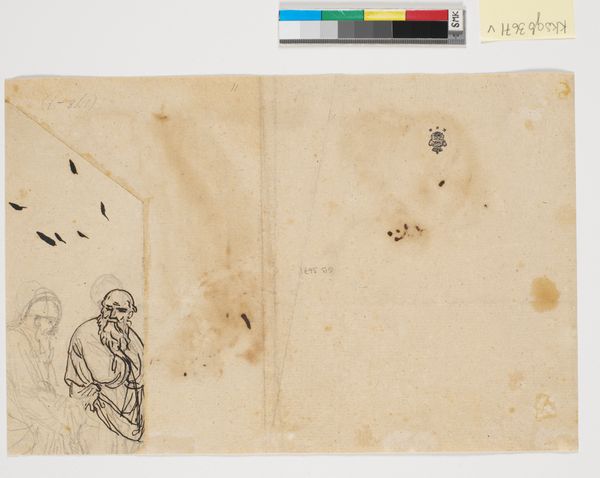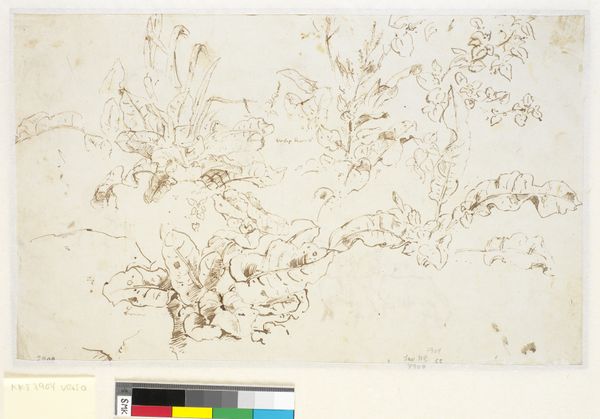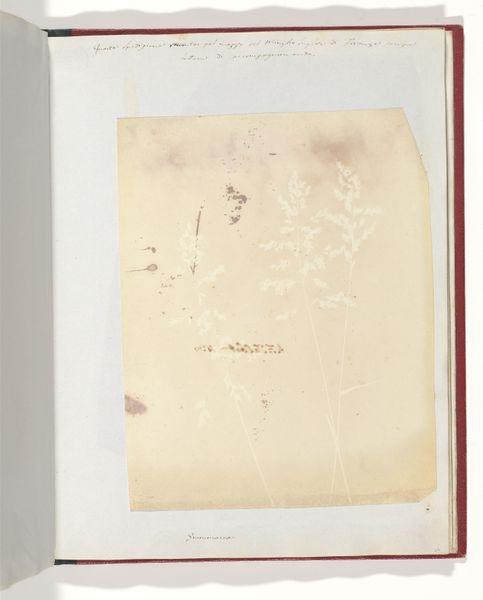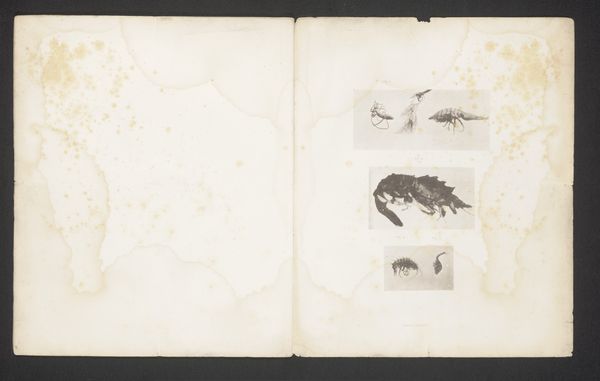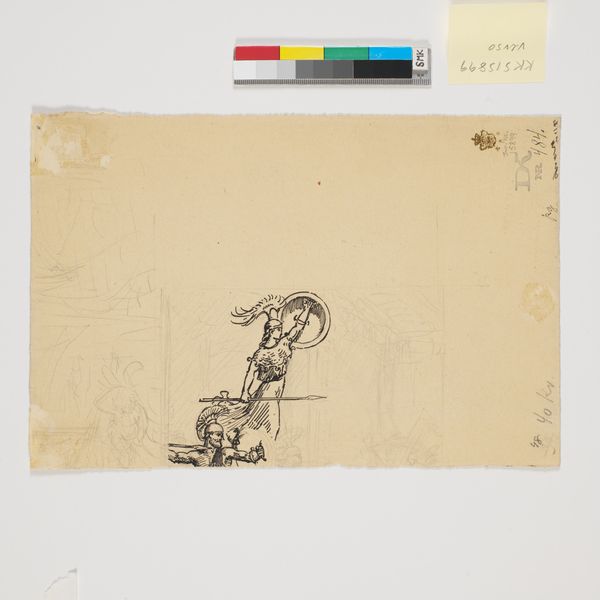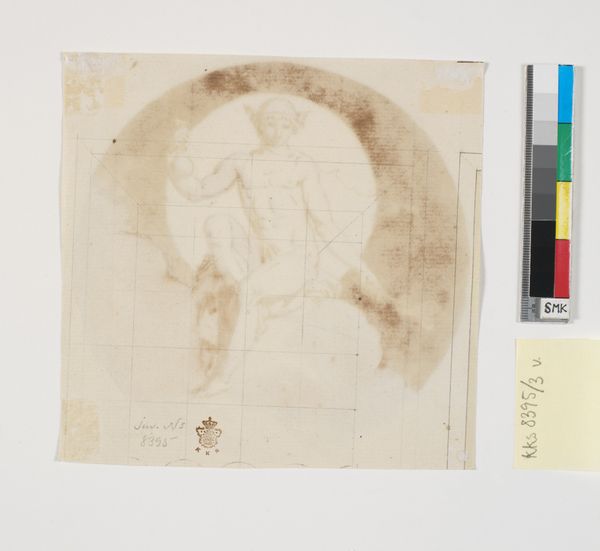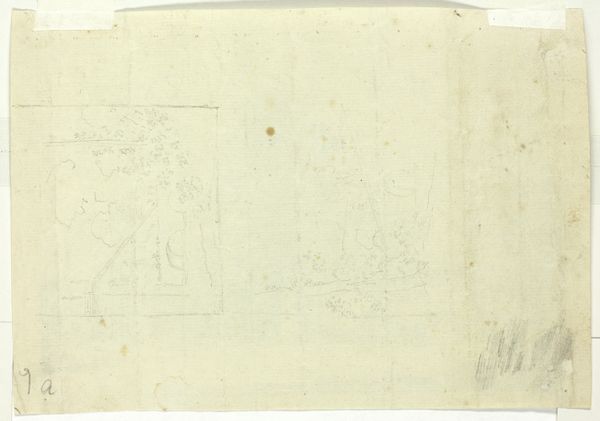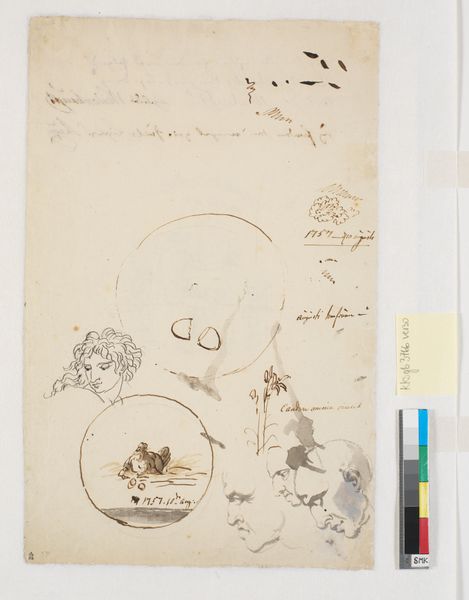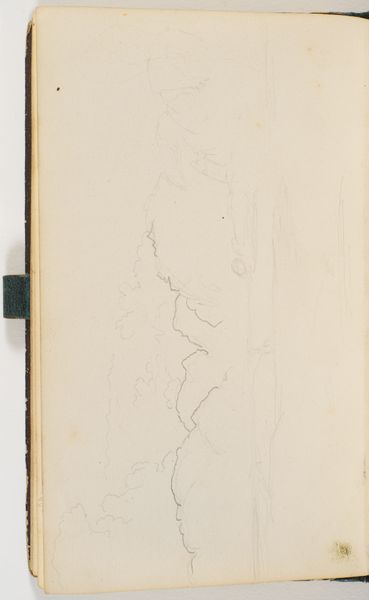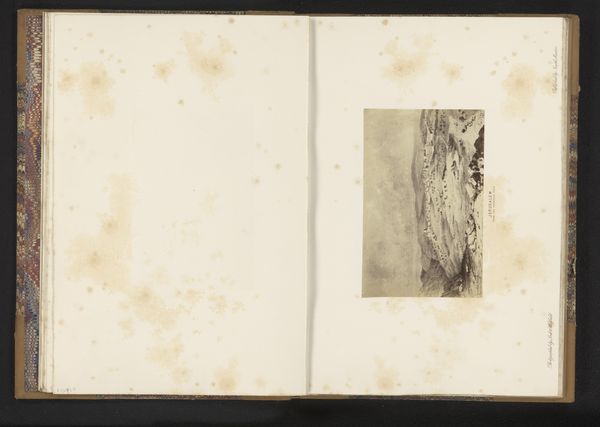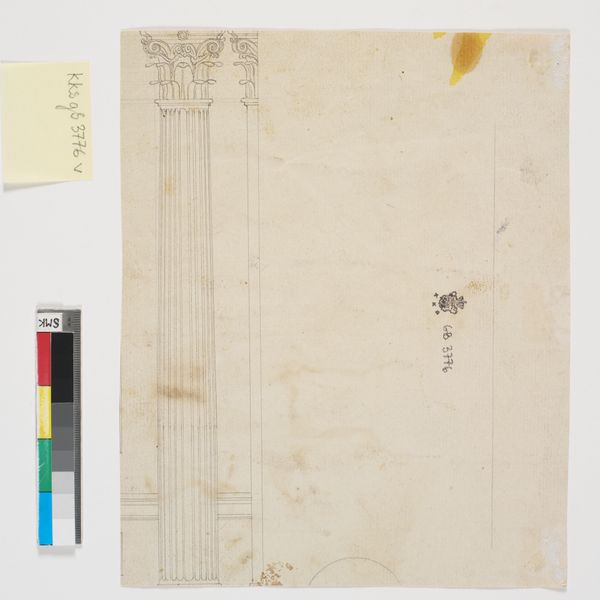
drawing, pencil
#
drawing
#
16_19th-century
#
landscape
#
pencil
#
realism
Dimensions: 320 mm (height) x 431 mm (width) (bladmaal)
Curator: This pencil drawing by P.C. Skovgaard, titled "Optegning af køer fra recto", dates back to somewhere between 1857 and 1860. It's currently held at the SMK, the National Gallery of Denmark. What strikes you immediately? Editor: The stark contrast in detail; on one side, there's a landscape almost fading into abstraction, while on the other, these vividly drawn cattle command our attention. Curator: Skovgaard was deeply invested in capturing the Danish landscape. We need to look at his relationship to national romanticism, and how the emerging capitalist farming shaped that environment, the literal material of his inspiration and economic conditions around his labor. Editor: Agreed, context is key, but let's first examine how the forms and techniques are playing out. See how the pencil strokes become more confident as they define the animals? It's like he's finding form through pressure and line. The drawing invites semiotic analysis in how lines represent volumes. Curator: Absolutely. He's capturing a likeness and a lifestyle. This era saw a boom in agricultural reform and market integration. Skovgaard gives us farm animals which were essentially cogs in a socioeconomic wheel. Consider the ethical consumption, then, of what he gives us: something ‘natural’ abstracted into a symbol of pastoral idealism. Editor: And notice how the emptiness surrounding the detailed cows accentuates them—they have compositional weight. The lack of detail elsewhere helps funnel the eye to them, setting them as principal in their formal relations, guiding a hierarchy, structuring vision. Curator: That might reflect Skovgaard's social positioning too. This realistic portrayal romanticizes agricultural life, a way of viewing labor mediated through elite distance. He’s recording change. Pencil and paper document it but filter too. How ‘real’ is our realism? Editor: An essential question. This sketch demonstrates how art embodies more than the immediate experience of viewing. A look at materials, method, and motif can reveal an extraordinary wealth of information about artistic creation itself. Curator: A compelling illustration that both intrinsic form and socioeconomic fabric construct our interpretations and inform art history, then.
Comments
No comments
Be the first to comment and join the conversation on the ultimate creative platform.
